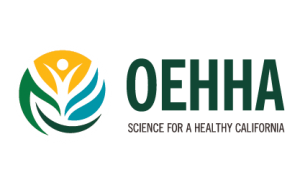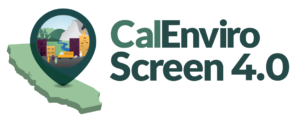

New Updates to Groundbreaking CalEnviroScreen Environmental Justice Tool Released for Public Input
FOR IMMEDIATE RELEASE:
February 22, 2021
Media Contacts:
CalEPA: Erin Curtis (916) 324-9670
OEHHA: Sam Delson (916) 764-0955
SACRAMENTO – State environmental officials today released a draft update to California’s groundbreaking environmental justice tool, CalEnviroScreen, for public review and comment.
CalEnviroScreen, developed by the California Environmental Protection Agency’s Office of Environmental Health Hazard Assessment, identifies pollution burdens and vulnerabilities affecting communities statewide.
The new draft version 4.0 updates the tool’s 20 existing pollution and vulnerability indicators with the latest data and improved methodology and adds a new indicator on children’s exposure to lead from housing.
The new version also includes several other improvements to existing indicators that better capture pollution sources affecting Californians. CalEnviroScreen version 4.0 adds chrome plating facilities, dairies and feedlots, and certain industrial and manufacturing pollution sources in Mexico affecting communities along the southern border. The update also includes higher resolution air pollution data pollution data, and is accompanied by race demographic data as well as other data products.
Since its first release in 2013, CalEnviroScreen has helped state, regional and local policymakers prioritize programmatic resources, policy initiatives, funding and attention in the communities that need it most. This prioritization has changed lives by contributing to improved compliance with environmental laws, cleaner air and water, improved access to affordable housing and mobility options, job creation, and greener, more vibrant communities.
“Systemic racism has led to communities of color suffering under the weight of significantly more pollution than white Californians. Environmental justice can only be achieved by identifying impacted communities. CalEnviroScreen is a mapping tool that helps us focus efforts and investments where they are needed the most,” said California Secretary for Environmental Protection, Jared Blumenfeld.
The draft CalEnviroScreen 4.0 uses data on 21 indicators of pollution, environmental quality, and socioeconomic and public health conditions to calculate a score for each of the state’s 8,000 census tracts based on their overall pollution burdens and vulnerabilities. CalEnviroScreen is used to aid in administering environmental justice grants, promote compliance with environmental laws, prioritize site-cleanup activities, and identify opportunities for sustainable development. Areas identified by the CalEPA as “disadvantaged communities” based on CalEnviroScreen scores—areas that experience a disproportionate share of the state’s pollution burdens and socio-economic vulnerabilities— and can receive a significant share of the California Climate Investments from the state’s Greenhouse Gas Reduction Fund and other benefits from specific Climate Investment programs.
“CalEnviroScreen illustrates what so many community residents have known all along” said Leadership Counsel Co-Director Phoebe Seaton, “that the same neighborhoods plagued with air pollution contend with water contamination and other challenges that need the attention of elected officials and public agencies.” She adds that the tool “has allowed Leadership Counsel to work with community leaders to call into question ongoing patterns of concentrating unhealthy land uses and facilities in disproportionately impacted communities.”
For the California Environmental Justice Alliance, known as CEJA, and its member organizations, CalEnviroScreen provides an important “science-based tool that has reshaped what is possible for advancing environmental justice in our state,” said Tiffany Eng, Green Zones Program Manager. “It has also educated decision-makers on the need to employ comprehensive approaches when tackling environmental justice issues,” she added.
For Luis Olmedo, Executive Director of Comite Civico del Valle, in the Imperial Valley, updating CalEnviroScreen and its related products is also important. “New data informing burdens that affect border communities are critical to our ability to advocate for localized and regional solutions that can be backed by equitable funding distribution,” he said.
Although race itself is not an indicator factoring into CalEnviroScreen scores, the results underscore the need to lead with race in developing policies to correct some of the state’s most stark disparities. The most polluted and vulnerable communities are overwhelmingly Latinx, Black and other communities of color, often including linguistically isolated and otherwise marginalized communities experiencing significant health and socio-economic vulnerabilities. These communities also tend to have high rates of COVID-19 cases.
OEHHA will hold a webinar on March 3, 2021 to introduce CalEnviroScreen 4.0, answer questions and receive initial public comments. The webinar will be followed by six virtual public workshops to collect regional input from across the state. These workshops will occur over a public comment period that closes April 30, 2021.
“We want to hear from as many people as possible and get their input on this new version of CalEnviroScreen,” said OEHHA Director, Lauren Zeise, Ph.D. “We welcome suggestions and are committed to ensuring that this update makes the best possible use of the available data to examine pollution and population factors and advance environmental justice.”
OEHHA will release a final version of CalEnviroScreen 4.0 this summer.
# # #
• California Air Resources Board • Department of Pesticide Regulation • Department of Resources Recycling and Recovery (CalRecycle) • Department of Toxic Substances Control • Office of Environmental Health Hazard Assessment • State Water Resources Control Board • Regional Water Quality Control Boards
CalEPA, 1001 I Street, Sacramento, CA 95814 • P.O. Box 2815, Sacramento, CA 95812 • (916) 323-2514 www.calepa.ca.gov

